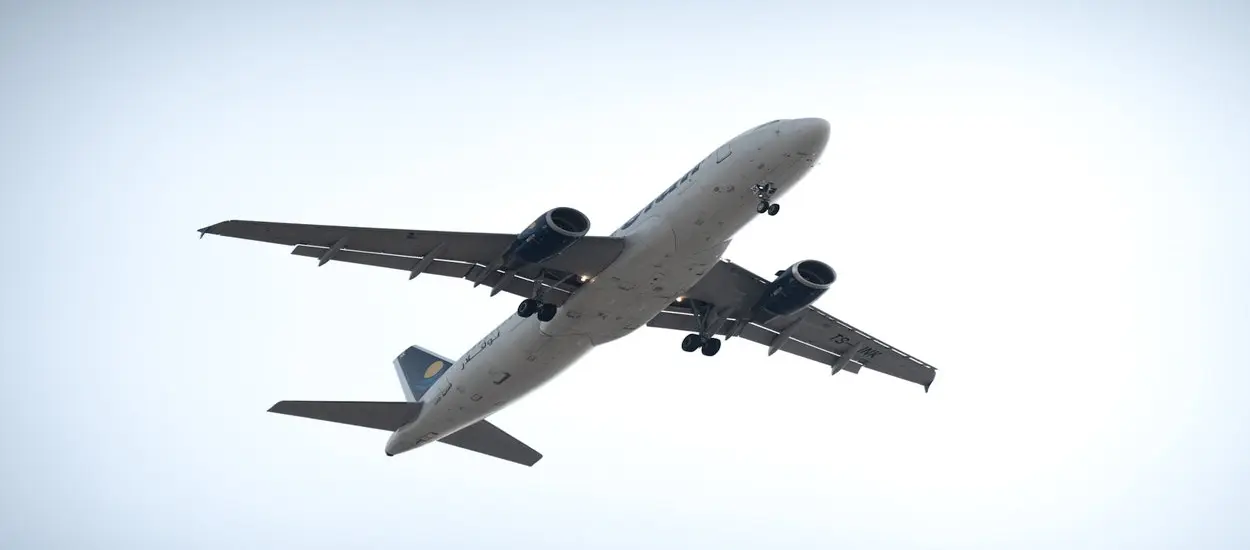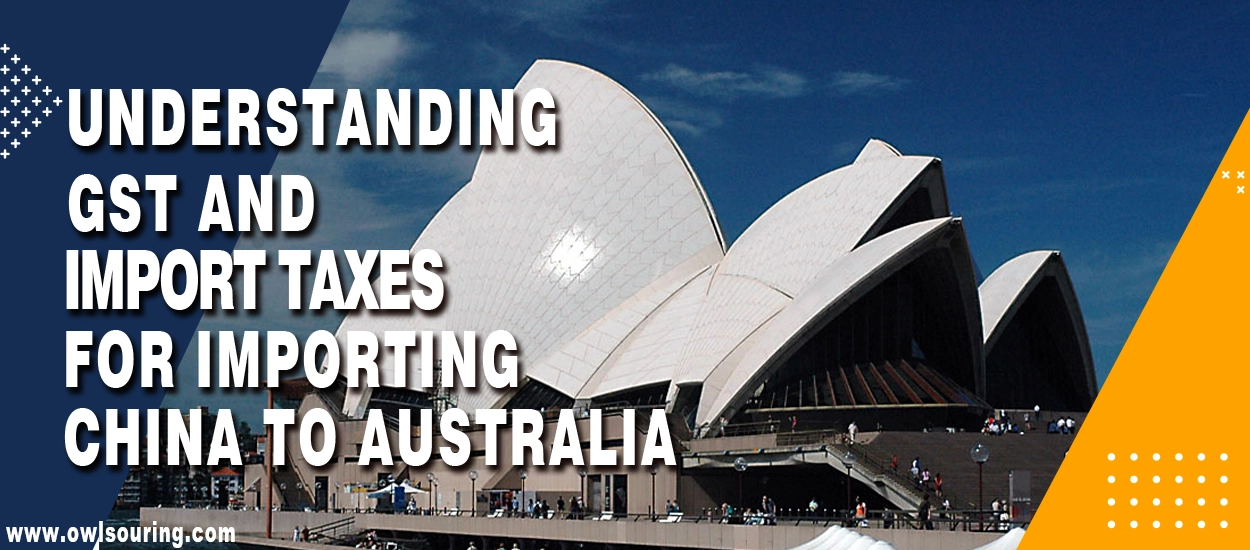Your business can benefit from importing items from China into Australia. Many Australian companies turn to Chinese suppliers for various products.
The reason is simple! Chinese suppliers offer many benefits to help companies grow in the Australian market.
But you must understand the rules, taxes, and shipping service options. In this guide, we will help you understand the sourcing process.
Understanding Import Regulations in Australia
Australian Border Force (ABF) handles importation into Australia. They ensure that imported goods meet Australian standards and pay the correct taxes.
There are several requirements for importing from China into Australia. Below are two significant laws you need to pay attention to.
1) Australian Business Number
An Australian Business Number is a number given to businesses based in Australia. Before you can bring your products into the country, get this number.
It’s like an ID card for your business. There are no charges to get it, and the application process is entirely online. An ABN helps the government know who’s bringing goods into the country. It also helps your business become legally registered and recognised.
2) China-Australia Free Trade Agreement
ChAFTA, as the full name suggests, aims to reduce importation costs. On regular occasions, when you bring goods into a country, you have extra costs called tariffs.
The China-Australia free trade agreement makes these tariffs smaller. It can also completely rid many Chinese products of them. That will make it cheaper for you to import from China to Australia.
Importance of Tax Compliance When Importing from China to Australia
Different taxes come into play when you import from China to Australia. It’s good to know which taxes apply to your product.
1) Customs Duty
You need to understand how to calculate your customs duty. It is calculated based on the type of goods and their origin.
Not all items have the same customs duty. Two things affect the customs duty on imported goods: the type of item and the origin of the item.
We have explained this point in our post on importing clothing and textiles from China. They have one fixed rate when importing clothes, fabrics, and blankets. However, food is at a different rate, and so are cars.
The government has an extensive list of all the different rates for each product. Check out government importation websites to determine what taxes you’ll pay for your items.
2) The 10% GST Rule for Imports
Goods and Services Tax (GST) is 10% on most imported goods. GST exempts some foods and medical products from falling under the rule.
How to Source Products from China as an Australian Businessman?
1. Research Key Chinese Markets
There are many of the world’s largest and most diverse wholesale markets in China, and each specialises in selling different types of products. Some of them are mentioned below:
- Yiwu Market: It is considered to be the world’s largest wholesale market, and it is a place for small commodities, accessories, and common goods.
- Guangzhou Wholesale Markets: This bustling hub specialises in electronics, clothing, and fashion accessories, making it ideal for retailers seeking to stock up on trendy, affordable items.
- Shenzhen Market: A global leader in technology and innovation, Shenzhen is the place to source state-of-the-art electronics and tech gadgets.
- Shanghai Markets: With a focus on high-end consumer goods and luxury fashion, Shanghai is perfect for premium product sourcing.
- Alibaba Online: As the biggest B2B platform, Alibaba connects buyers across industries with various suppliers, giving convenience and a variety that saves from travel troubles.
Are you interested in learning how to source stone from China? Read more about the stone and tile market in China today!
2. Make use of Trade Shows
Trade fairs are one of the best ways to meet suppliers in person, inspect products firsthand, and establish long-term working relationships. Larger trade fairs include the Canton Fair (Guangzhou), the Yiwu Fair, and the China International Import Expo (CIIE), which are unbeatable for discovering new products and finding reliable suppliers.
3. Hire a sourcing agent
Chinese markets can be challenging to navigate if you cannot speak the language or simply aren’t used to doing business locally. A good China sourcing agent goes a long way in helping you find reliable suppliers, negotiate good prices, and ensure strict quality control in the process.
4. Verify Suppliers
It is very crucial to ascertain the reliability of your suppliers before giving the green light for big orders. Run background checks on them, including things like business licenses, certifications, and customer reviews. Ask for product samples to check quality and ensure that it meets your standards.
For more information, check out my other articles “How to Verify a Chinese Supplier’s Legitimacy” and “How Can You Verify Chinese Factories.”
5. Understand Import Regulations
Get in contact with the knowledge of Australian import law, customs duty, and product compliance requirements to avoid any delay or penalty.
Knowledge about such will keep you well prepared in strategising about sourcing and thereby ensure smooth functions.
Import License Requirements for Goods from China to Australia
| Category | License Required | Details / Regulatory Body |
|---|---|---|
| General Consumer Goods | ❌ No License Required | Includes apparel, electronics, and homewares. Must comply with Australian customs regulations (classification, valuation, GST/duties). |
| Restricted or Regulated Goods | ✅ Permits Required | Applies to items like: – Food, plants, animals – DAFF – Medicines & devices – TGA – Chemicals – Environment/Health agencies – Firearms/explosives – Specific licensing needed |
| Agricultural & Food Products | ✅ Import Permit May Be Required | Certain products (e.g., processed foods, seeds) need a permit under BICON to meet biosecurity and food safety standards. |
| Biosecurity / Quarantine-Sensitive Goods | ✅ Biosecurity Compliance Required | Goods like untreated wood or soil-contaminated items must meet DAFF-regulated BICON conditions to avoid border detention. |
| Intellectual Property (IP) | ⚠️ Recommended (Not Required) | Register trademarks/designs with IP Australia before importing to protect your brand from counterfeits or infringement. |
| Consumer Goods Standards | ✅ Standards Compliance Required | Products must meet Australian standards: – Electrical goods – ACMA regulations – Toys, baby items – ACL safety laws Non-compliance can lead to penalties or recalls. |
6. Logistics and Shipping
It goes without saying that shipping and logistics are very critical components of any successful sourcing. Partner with genuine freight forwarders who can comfortably handle shipping, customs clearance, and delivery into Australia.
Besides, allow shipping costs and lead times for calculation in arriving at your overall expense to maintain profitability.
Key Shipping Options to Import from China to Australia – Air vs. Sea Freight
You must choose the correct shipping method when importing from China to Australia. The two main options include air and sea freight, which we will discuss below.
1) Air Freight

Image Source: Pexels
Air Freight is fast when you import from China to Australia. It typically takes 3-8 days for your goods to arrive in Australia.
However, the high speed increases the price, too. Air Freight is the most expensive method compared to others.
To pick a better option, you must identify your products’ value and volume. Moreover, if you need them quickly, air freight is best.
2) Sea Freight
It is slower, typically taking 20-40 days. However, Sea Freight is cost-effective and is mainly used for large shipments. If you have bulky goods, then it is ideal.
You must choose a suitable method based on your shipment’s specifications. Size, speed, and your budget will matter in this case.
Because of this, the urgency of your delivery and its size will be the decision maker. Your overall capital budget is also essential. Thus, ensure you have all your facts straight before choosing an option.
Steps to Calculate Import Taxes and Duties

It is essential to calculate import taxes when sourcing from China to Australia. The duty amount depends on your product’s HS code and origin, i.e., China. So, you must find out the HS code of the products.
You should add 10% GST to the total import costs. For this, take the value of your goods, add the duty, and then add 10% more for GST.
It might seem like many steps, but doing this with care can help you pay the right amount.
Here is an example calculation:
Suppose you imported electronics goods worth AUD 10,000. Then, you may have to pay the taxes and duties below.
1) Import Duty
It is generally 0-5% for electronics. So, 5% of AUD 10,000 = AUD 500
2) Goods and Services Tax
- 10% of the total (customs value + duty + insurance + freight)
- The freight and insurance costs can be AUD 1000.
- 10% of 11500 = AUD 1150
- Thus, the approximate total taxes and duties become import duty + GST.
- 500 + 1150 = AUD 1650
This calculation may be more complex depending on the goods and trade deals. Get everything accurate before doing your calculations.
We have explained simple methods to calculate it in our post “Import tariffs from China to the US“.
Tips to Ensure a Smooth Import from China to Australia
You must partner with three players who can make your import process smooth. They are;
- Sourcing agents
- Customs brokers
- Freight forwarders
A reliable sourcing agent can help you find a China factory in South China. Besides, an agent can do many other tasks.
However, each partner handles a different role and offers various benefits for your business. Thus, you must have information before choosing who to use for imports.
| Factor | Sourcing Agent | Customs Broker | Freight Forwarder |
| Duty |
|
|
|
| Benefits |
|
|
|
Extra Costs to Look Out For When Importing from China to Australia

There can be several extra expenses that can make new importers worried. Knowing these additional costs can help you budget more accurately.
1) Storage Fees at Ports or Airports
Sometimes, your goods must stay at the airport or port for a while. It may happen when there is a delay in customs or if paperwork is needed while checking your items.
When that happens, you may have to pay for storage time. It’s basically like paying for the rent of where your goods are kept during the checkups.
2) Customs Inspection Charges
The government might want to look at your goods to ensure they’re safe and allowed in Australia. If they do this, you have to pay for it. It’s like paying for a security check at the airport but for your goods.
3) Fumigation Fees for Certain Goods
Some products, like plants or wooden items, might need special cleaning. It ensures they don’t bring in bugs or diseases. This cleaning costs money.
These fees may not be incurred when importing accessories and jewellery from China.
4) Currency Exchange Rate Fluctuations
You usually pay in Chinese money (yuan) when you buy things from China. However, the price of Chinese money compared to Australian dollars can change daily. You might end up paying more or less than you thought.
5) Bank Fees for International Transfers
Sending money to your Chinese supplier might incur some bank charges. It’s basically paying a transaction fee for international transfers. Check with your bank first. Call them and look at the prices to send money to different countries.
Key Mistakes to Avoid When Importing from China to Australia
| Mistake | Description | Solution |
|---|---|---|
| Always Buying at the Cheapest | Choosing the lowest price could result in scams or low-quality products. | Perform due diligence, request prototypes, and prioritise quality over price. |
| Lost in Translation | Miscommunication due to language barriers may lead to incorrect orders. | Use simple English, consider hiring a translator, or communicate in the supplier’s local language. |
| Rushing the Production Line | Demanding quick deliveries can compromise product quality. | Be patient; prioritise quality over speed and partner with suppliers who uphold high standards. |
| Miscalculating Margins | Ignoring customs duties, shipping costs, and taxes can lead to selling at a loss. | Factor in all additional costs (customs, shipping, insurance, taxes) when calculating margins. |
Read More:
- How to Import a Battery from China: A Complete Guide
- How to Import Building Materials From China
- How to Import Shoes From China: Fashion Footwear Guide
- How To Import Bags From China: A Detailed Guide
Final Thoughts!
Now, you can import from China to Australia hassle-free. It needs careful planning and a better understanding of tax duties.
Remember, successful importing is about more than finding the cheapest supplier. You can let a China sourcing service take the trouble out of your sourcing process.
OwlSourcing specialises in making imports from China to Australia smooth and straightforward. Our team understands Australian import laws. It will ensure your goods arrive safely in Australia without any surprise costs.



2 thoughts on “Import from China to Australia in 2025”
Andy has effectively highlighted the key aspects of GST and import taxes for importing from China to Australia. His clear guidance on GST for low-value goods and customs duties based on HS codes helps businesses manage taxes properly, ensuring compliance and avoiding unexpected costs.
Thank you for your comment! Properly managing GST for low-value goods and understanding customs duties based on HS codes are crucial for compliance and avoiding unexpected costs. If you need further assistance or detailed advice, feel free to reach out anytime. We’re here to help!